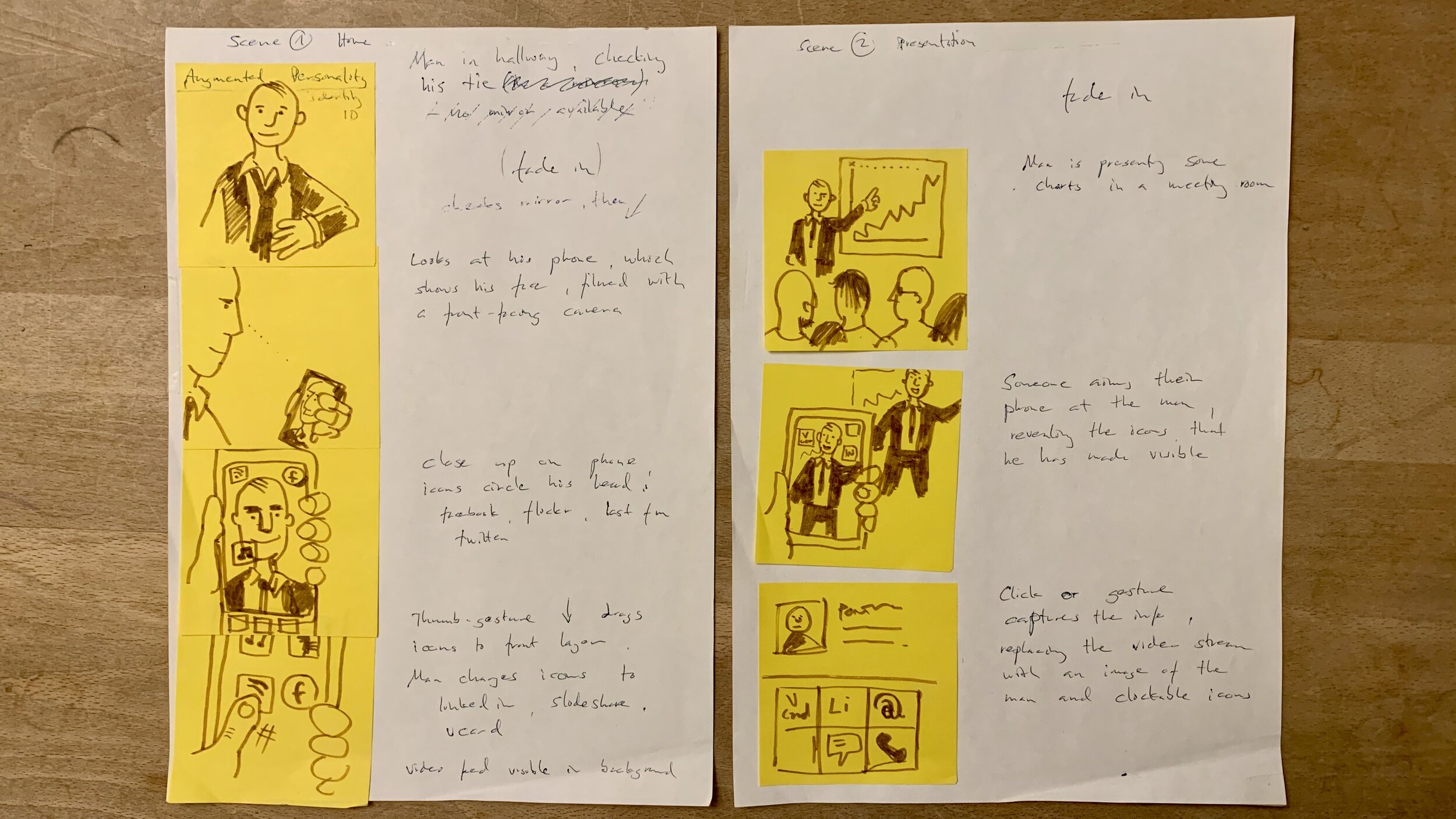Here’s a kind of cautionary tale about how a prototype once led to more attention than TAT could handle.
In 2009, we held a series of brainstorming sessions around what new experiences computer vision might bring to mobile devices. It was before the big hype around augmented reality and we thought that linking images of the real world to digital information seemed like a cool idea. So, what type of objects could be recognized through computer vision? We considered everything from bar codes in shopping scenarios to stories about recognizing and translating signs.
Finally, James convinced us that the concept should be about recognizing people. It definitely seemed far more engaging than shopping, although it raised new questions. Why would someone point a camera phone at a person to see more info about them? The coin dropped when we approached the question from the opposite angle. Could there be scenarios where extreme extroverts actually want to be recognized by others?
We imagined an opt-in recognition service for people who attend a lot of public events and conferences. Maybe they want to change their social network profiles from “party” to “business”, just like people change clothes for different occasions? We drew a storyboard about a person who makes public information about himself easily available through an “Augmented ID” service.
Since we had friends at Polar Rose, we asked them if this kind of concept could be implemented and if they wanted to co-brand our video. This added some extra credibility and it turned out to be a great match of technology and UX vision. The Augmented ID video was viewed hundreds of thousands times and it got covered by reliable tech media such as Wired and ReadWriteWeb.
Soon, TAT’s customers started asking us if it really could be implemented so we decided to try building a prototype together with Polar Rose. At the time, it was still mainly a fun experiment to us and we gave the prototype the ironic name Recognizr. Then we brought it to Mobile World Congress.
This is where things started going out of control. Our first mistake was the way we filmed the prototype. Since so many people had seen our original video where we explained the opt-in scenario, we skipped this part of the story in the second video and just showed the functionality of Recognizr. Without the original context, this new video became more scary than exciting.
After MWC, we were contacted by MIT Technology Review who wrote a great article about our work. Unfortunately, I was stupid enough to make a guess that the prototype could become a real app within a few months. It turned out to be a big mistake.
Suddenly, mainstream media started picking up the video and my reckless quote. With impressive speed, online media started quoting each other and the story spread to The Atlantic, BBC, Huffington Post, The Sun and even Fox News.
For a few weeks, we hardly did anything but answer questions about Recognizr. It was intense and we learned a lot of lessons about how online media work (which seems to be accurately captured in this cynical book). We were glad that the attention faded eventually and that we decided not to continue working on Recognizr. While it was fun as a concept, it could have become a really annoying app.




